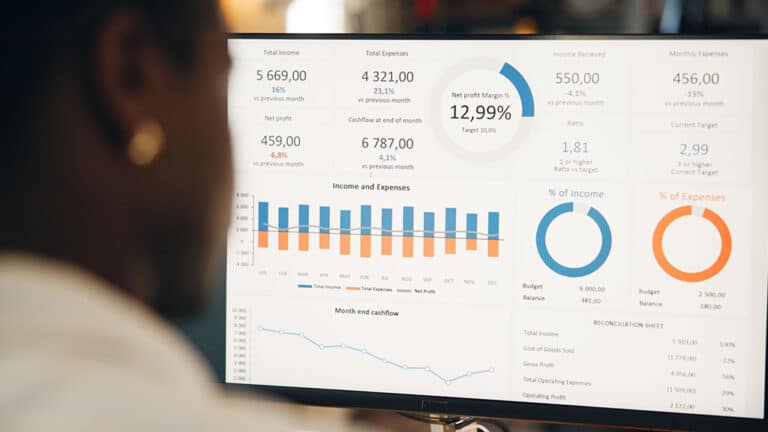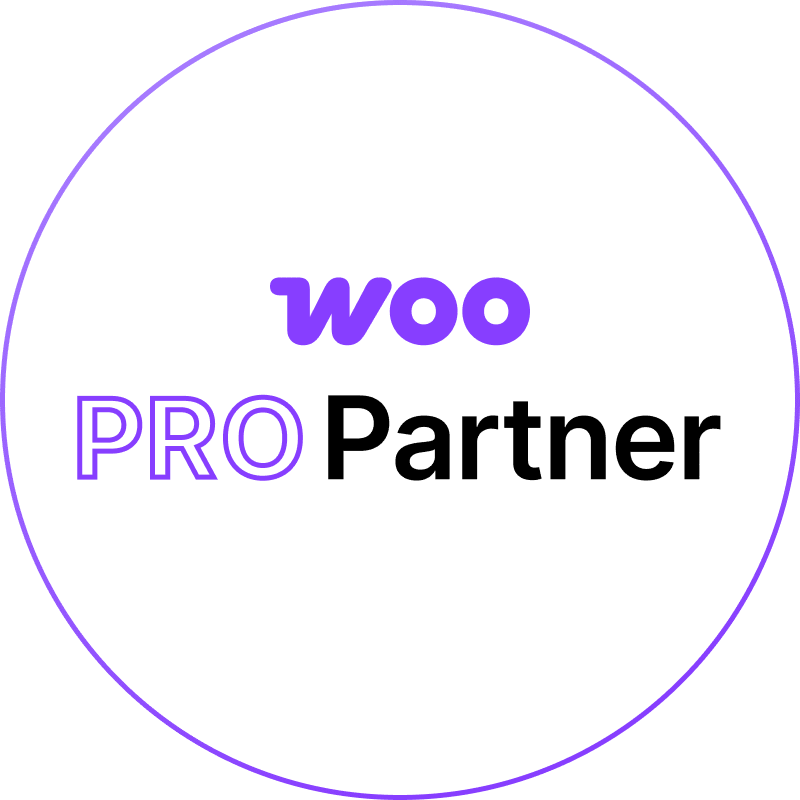The Power of Long-Tail Keywords in Small Business PPC Campaigns
In the world of PPC (Pay-Per-Click) advertising, targeting the right keywords is essential for maximizing campaign success. For small businesses, long-tail keywords offer an often overlooked yet incredibly powerful advantage. These keywords, which are longer and more specific search phrases, allow businesses to reach a more focused audience with higher intent and less competition. While short-tail keywords (e.g., “shoes” or “digital marketing”) may generate a lot of traffic, they also tend to be highly competitive and expensive. Long-tail keywords, on the other hand, offer small businesses the opportunity to target highly specific search queries at a lower cost, while also attracting more qualified traffic that is more likely to convert.
This guide explores the power of long-tail keywords in small business PPC campaigns and how they can help businesses improve ad targeting, reduce costs, and increase conversions. Small businesses that leverage PPC advertising services effectively can harness the potential of long-tail keywords to enhance their marketing efforts and achieve better results at a lower cost. Whether you’re an e-commerce store or a service-based business, long-tail keywords provide an opportunity to refine your audience targeting and boost your return on ad spend (ROAS). By focusing on specific, niche search terms, businesses can avoid wasting their budget on irrelevant traffic and instead attract users who are further along in their buying journey.
What Are Long-Tail Keywords?
Long-tail keywords are search phrases that are longer, more specific, and often have lower search volume than broad keywords. For example, while a short-tail keyword like “shoes” might generate thousands of searches, a long-tail keyword like “affordable running shoes for women with flat feet” is much more specific and often has far fewer searches. The key difference is that long-tail keywords tend to target people who are closer to making a purchase or decision. These users have a more specific need and are more likely to convert, as they are already aware of their requirements and are actively searching for a solution.
For small businesses, long-tail keywords are valuable because they allow you to target a highly specific audience. Instead of competing for broad terms with many other advertisers, you’re focusing on a niche audience that is more likely to engage with your products or services. For example, an online store selling handmade candles may find it more effective to target long-tail keywords like “hand-poured soy candles with lavender scent” instead of just “candles.” The specificity of the long-tail keyword ensures that the ad reaches customers who are searching for exactly what the store offers, increasing the chances of conversion.
Another benefit of long-tail keywords is that they are often more cost-effective. Because they have less competition than broader terms, they generally result in lower cost-per-click (CPC) rates. This allows small businesses to get more clicks for their budget and ultimately generate more traffic and conversions. Long-tail keywords also tend to have higher conversion rates because they attract users who are further down the sales funnel, actively looking for a solution that matches their specific needs.
Reduced Competition and Lower Cost-Per-Click (CPC)
One of the most significant advantages of using long-tail keywords in your PPC campaigns is the reduction in competition. Broad keywords like “marketing” or “shoes” are highly competitive and often cost more due to the large number of businesses bidding on these terms. Small businesses, especially those with limited budgets, can find it challenging to compete for these high-cost keywords. In contrast, long-tail keywords tend to have much less competition, which leads to lower CPC rates.
For small businesses with limited budgets, the ability to target less competitive keywords while still reaching relevant, high-intent customers can result in a significant reduction in overall advertising costs. For example, if you’re running an online store that specializes in eco-friendly clothing, you might bid on the broad keyword “clothing,” but you’ll likely face stiff competition from larger brands with bigger ad budgets. However, by targeting long-tail keywords such as “affordable eco-friendly clothing for women” or “sustainable cotton t-shirts,” you can attract a more specific audience with lower competition, meaning you’ll pay less per click.
The reduction in competition for long-tail keywords doesn’t just help lower CPC; it also improves the overall efficiency of your PPC campaigns. Since you’re bidding on terms that are more closely aligned with your product or service offering, the chances of your ad being clicked by relevant users increase. This improved relevance leads to a higher click-through rate (CTR), which can positively impact your Quality Score in Google Ads. A higher Quality Score can further reduce your CPC and improve your ad’s positioning, helping your ads appear more frequently without increasing your budget. Ultimately, using long-tail keywords allows you to spend your PPC budget more wisely, driving better results at a lower cost.
Increased Relevance and Better Quality Score
One of the primary advantages of using long-tail keywords in your PPC campaigns is increased relevance, which leads to a better Quality Score. Quality Score is a metric used by Google Ads to measure the relevance and quality of your ads, keywords, and landing pages. A higher Quality Score can result in better ad positions and lower cost-per-click (CPC), making it a key factor in optimizing your PPC campaigns. Long-tail keywords contribute to better Quality Score because they are more specific and closely aligned with a user’s search intent.
When you use long-tail keywords, your ad copy becomes more tailored to the specific needs of the searcher. For example, if your ad is targeting “buy eco-friendly yoga mats,” the user is likely searching for exactly that. By creating an ad that reflects this specific need, you improve the relevance of your ad and increase the likelihood of getting a click. This relevance boosts your CTR (click-through rate), which is one of the factors that determine your Quality Score. The more relevant your ad is to the search query, the higher the chances it will get clicked, which improves your ad performance and lowers CPC over time.
In addition to improving ad relevance, long-tail keywords also allow you to create landing pages that are specifically aligned with the searcher’s intent. A more focused landing page that mirrors the ad’s promise leads to a better user experience, which also contributes to a higher Quality Score. When users arrive at a landing page that directly addresses their needs, they are more likely to convert, which in turn helps you achieve better results for your ad spend. By targeting long-tail keywords and ensuring your landing pages match the message in your ads, you can increase your Quality Score and improve the overall effectiveness of your campaigns.
Attracting Highly Targeted, High-Intent Traffic
One of the most significant benefits of long-tail keywords is the ability to attract highly targeted and high-intent traffic. Because long-tail keywords are more specific, they typically attract users who are closer to making a purchasing decision or taking another valuable action, such as signing up for a service. For small businesses, targeting these high-intent users is essential for maximizing conversions and making the most of your PPC budget.
For example, consider a local business selling pet grooming services. Instead of targeting a broad keyword like “pet grooming,” the business could focus on long-tail keywords like “affordable pet grooming in [city]” or “dog grooming services for senior pets.” These long-tail keywords attract customers who are not only interested in pet grooming but also searching for services in a specific location or for a particular need. By attracting users with a high level of intent, small businesses can increase their chances of converting those visitors into customers.
Long-tail keywords also help you reach niche markets, which is crucial for businesses with unique or specialized offerings. For instance, a business selling eco-friendly beauty products may target keywords like “organic skincare products for sensitive skin” instead of simply bidding on “skincare.” This specific targeting ensures that the ad is shown to users who are actively looking for products that meet their exact needs, leading to higher engagement and conversions.
Additionally, the higher relevance of long-tail keywords means that the traffic you attract is more likely to convert. Since these users are searching for exactly what you offer, the likelihood of them following through with a purchase, sign-up, or inquiry increases. This improved conversion rate directly impacts the ROI of your PPC campaigns, making long-tail keywords a cost-effective way to generate high-quality leads and sales.
Easier Conversion Tracking and ROI Measurement
Long-tail keywords make it easier to track conversions and measure the ROI of your PPC campaigns. When you target more specific search terms, the actions that users take are more likely to align with your business goals, such as making a purchase, submitting a form, or booking a consultation. This clear alignment between keyword intent and conversion actions simplifies the process of tracking performance and assessing the effectiveness of your ads.
For instance, if you’re running an e-commerce store and targeting long-tail keywords like “best vegan leather handbags,” you can easily track how many users who searched for that specific term end up making a purchase on your website. With broad keywords like “handbags,” on the other hand, you may attract a large number of clicks from people who aren’t interested in your specific product offerings, making it harder to assess your campaign’s effectiveness.
With long-tail keywords, the path from search to conversion is clearer, which allows you to better measure your return on investment (ROI). Conversion tracking tools in Google Ads and Google Analytics can help you monitor how well your long-tail keywords are driving results. By looking at metrics such as cost per conversion (CPA), return on ad spend (ROAS), and overall conversion rates, you can determine which keywords are delivering the most value and adjust your budget accordingly. This level of precision in tracking allows small businesses to optimize their campaigns, allocate their budgets more effectively, and achieve higher returns on their ad spend.
By using long-tail keywords, small businesses can simplify the process of measuring PPC success, making it easier to track results and continually optimize campaigns. This increased focus on high-intent, relevant traffic ensures that every dollar spent on PPC advertising is contributing directly to achieving business goals.
Long-Tail Keywords in Local PPC Campaigns
Long-tail keywords are especially powerful in local PPC campaigns, helping small businesses target customers within specific geographic areas. For businesses that rely on local customers—such as restaurants, salons, law firms, or home services—local PPC campaigns can help ensure that your ads are reaching the right audience at the right time. Using long-tail keywords with location modifiers, such as city names, neighborhoods, or even specific landmarks, allows small businesses to target customers who are actively searching for products or services within a particular area.
For example, a coffee shop in Los Angeles may use long-tail keywords like “best coffee shop in downtown Los Angeles” or “organic coffee near me.” These specific search terms help the business reach potential customers who are nearby and looking for exactly what they offer. By targeting location-specific long-tail keywords, businesses can attract high-quality, local traffic and drive foot traffic to their stores, which is essential for small businesses that rely on in-person visits.
Geo-targeting and long-tail keywords work together to maximize your ad spend. With geo-targeting, you can further refine your audience by ensuring that your ads are only shown to users in certain locations. For example, if you’re a plumbing service in Boston, you could target keywords like “emergency plumbing services in Boston” and only show ads to people within a specific radius of your business. This helps to avoid wasting your budget on clicks from users outside your service area who are unlikely to convert.
Local PPC campaigns that use long-tail keywords not only help increase visibility but also boost conversion rates by focusing on users with high intent and local relevance. As more consumers turn to search engines for immediate solutions, targeting local long-tail keywords ensures that your business appears when potential customers need you the most. By optimizing for local search with long-tail keywords, small businesses can drive more qualified traffic and compete effectively in their local markets.
Use of Long-Tail Keywords in Seasonal and Niche Campaigns
Long-tail keywords can be a game-changer for small businesses that want to tap into seasonal trends or niche markets. Whether you’re offering holiday-themed products, seasonal promotions, or catering to a very specific audience, long-tail keywords allow you to reach highly targeted groups during specific times of the year. This approach helps businesses increase visibility during peak seasons while minimizing ad spend.
For example, an e-commerce store selling holiday decorations can take advantage of long-tail keywords like “affordable Christmas tree decorations” or “best holiday wreaths for front doors” to attract users who are specifically searching for seasonal items. Instead of competing with the broader term “decorations,” targeting long-tail keywords related to specific holidays or events ensures your ads are shown to customers actively interested in those items. By capitalizing on these seasonal searches, small businesses can generate traffic and sales during key times, making the most of their PPC budget.
Similarly, long-tail keywords are excellent for niche campaigns where businesses offer specialized products or services. For example, a small business selling eco-friendly pet products can target keywords like “biodegradable dog poop bags” or “organic pet shampoo for sensitive skin.” These niche long-tail keywords help businesses attract customers who are specifically looking for those specialized products, making it easier to convert users into loyal customers. Long-tail keywords allow businesses to avoid competing with large, generic brands by focusing on their unique offerings, which can be a great advantage in niche markets.
By incorporating long-tail keywords into seasonal and niche campaigns, small businesses can improve targeting, increase engagement, and drive sales during key periods. These specific search terms provide the opportunity to reach customers at the moment they are most likely to make a purchase, ensuring that your PPC efforts align with your business goals.
Improving Ad Copy and Landing Page Optimization
Long-tail keywords are an essential tool for improving both your ad copy and landing page optimization. One of the key benefits of using long-tail keywords is the ability to craft highly specific and relevant ads that directly match user intent. When your ads are closely aligned with the search terms used by potential customers, your ad becomes more compelling, increasing the chances of a click. The relevance of long-tail keywords makes it easier to create engaging ad copy that speaks directly to users’ needs, making your campaigns more effective.
For instance, a small business offering personalized home decor might create an ad with the headline “Custom Handmade Pillows for Your Home – Free Shipping!” for the long-tail keyword “custom handmade pillows for living room.” This ad directly addresses the searcher’s query, increasing the likelihood that they’ll click on the ad and visit the website. In addition to improving ad relevance, long-tail keywords allow you to create ad copy that highlights the specific benefits and features of your products or services, setting you apart from competitors.
The effectiveness of long-tail keywords also extends to landing pages. When users click on your ad, they should land on a page that reflects the message in the ad and provides the information they are looking for. By matching your landing page content to the long-tail keyword and ad copy, you create a cohesive and seamless user experience. For example, if the ad targets “best organic skincare for acne-prone skin,” the landing page should immediately feature organic skincare products designed for acne treatment, with additional content that further speaks to the user’s needs.
Optimizing your landing page for long-tail keywords not only helps improve conversion rates but also impacts your Quality Score in Google Ads. Google rewards ads and landing pages that provide a relevant and high-quality user experience, which can help lower your cost-per-click and improve your ad position. By creating relevant and compelling ad copy and landing pages optimized for long-tail keywords, you increase the likelihood of conversions and make the most of your PPC budget.
Scaling PPC Campaigns with Long-Tail Keywords
Once you start seeing success with long-tail keywords, scaling your PPC campaigns becomes much easier. Since long-tail keywords are less competitive and more targeted, they often result in higher conversion rates, which means that increasing your budget for these keywords can lead to greater returns. Expanding your long-tail keyword list allows small businesses to reach even more specific audience segments and tap into new markets, driving even more relevant traffic to their websites.
To scale your campaign, start by identifying the high-performing long-tail keywords that have brought in the best results. Then, expand on these keywords by adding variations and closely related terms. For example, if “affordable yoga mats for beginners” is driving a high conversion rate, you can expand to terms like “best yoga mats for beginners,” “eco-friendly yoga mats for beginners,” or “non-slip yoga mats for beginners.” By continually adding new variations and targeting more niche groups, you can capture additional qualified traffic without significantly increasing competition or cost.
As you scale your campaigns, it’s also essential to monitor performance and adjust your bidding strategies to allocate more budget to high-performing long-tail keywords. Since these keywords are more cost-effective and have a higher conversion rate, increasing your bids for these terms will result in better ad placements and more clicks, ultimately driving more conversions.
By continuously expanding your long-tail keyword list and optimizing your campaigns based on performance data, you can scale your PPC efforts effectively and maximize your ROI. The beauty of long-tail keywords is that they allow small businesses to grow their PPC campaigns strategically without breaking the bank.Ready to take your PPC campaigns to the next level? Contact Zen Agency today to discover how our expert PPC management services can help you drive targeted traffic, increase conversions, and maximize your ROI. Let’s turn your digital ads into measurable success!

















